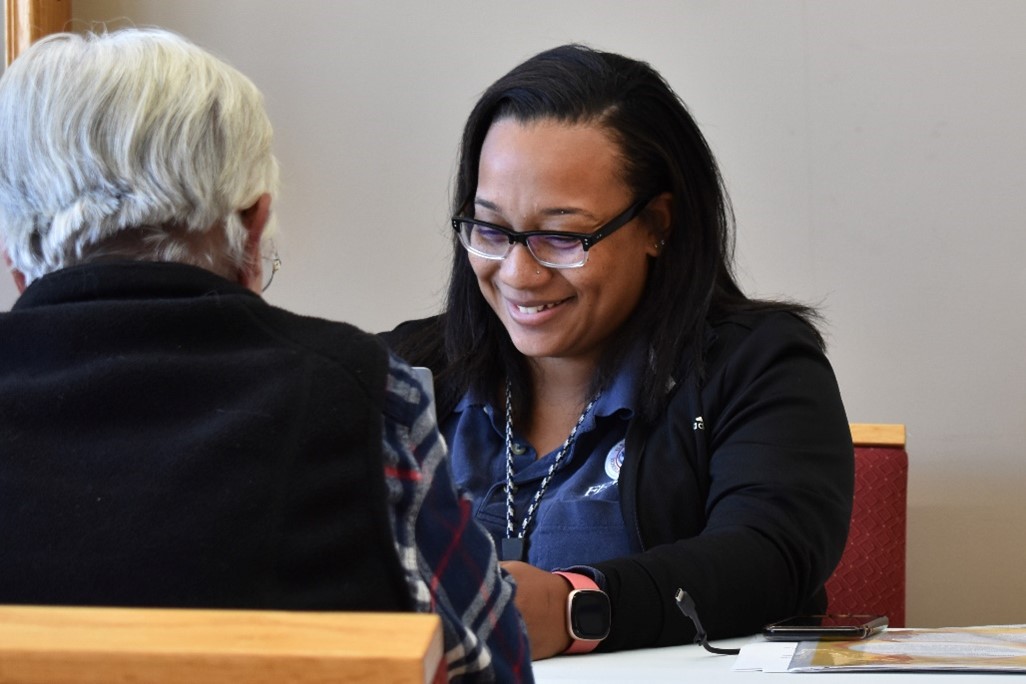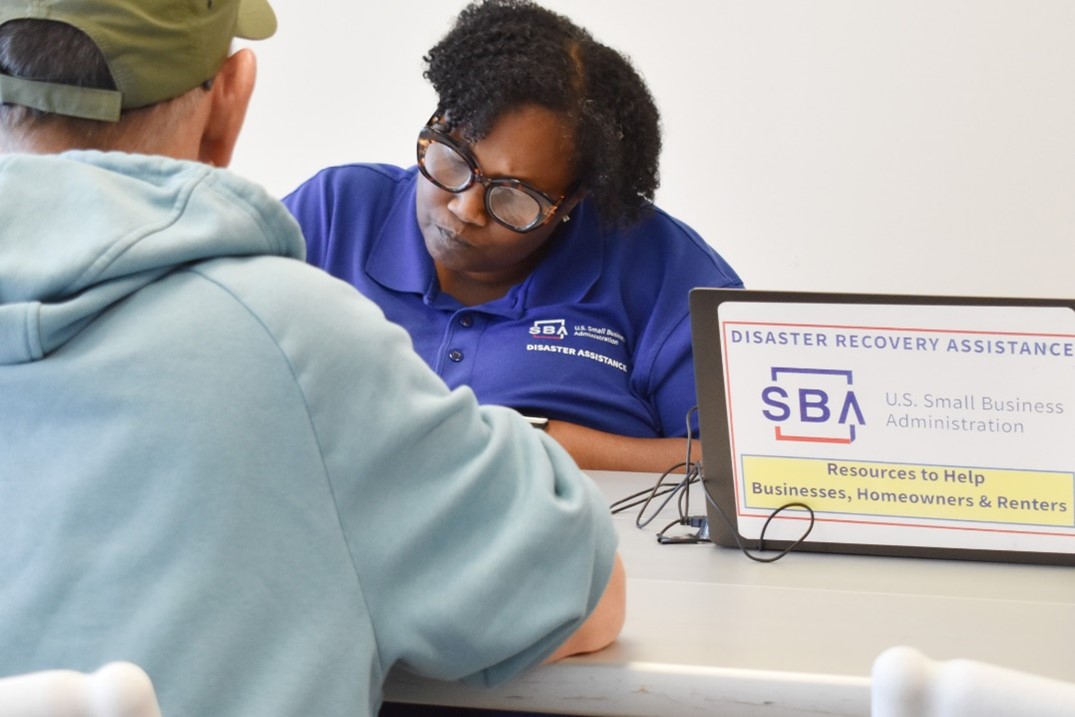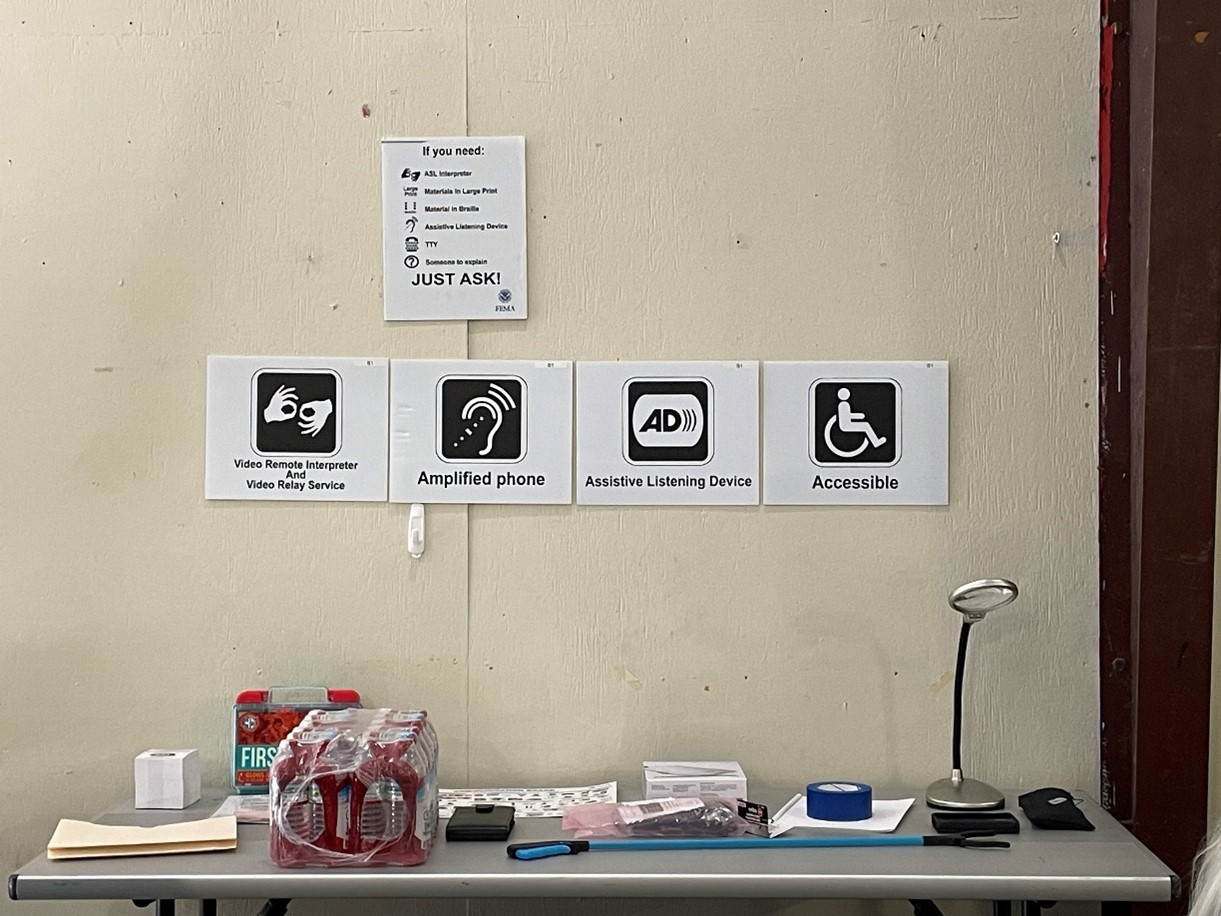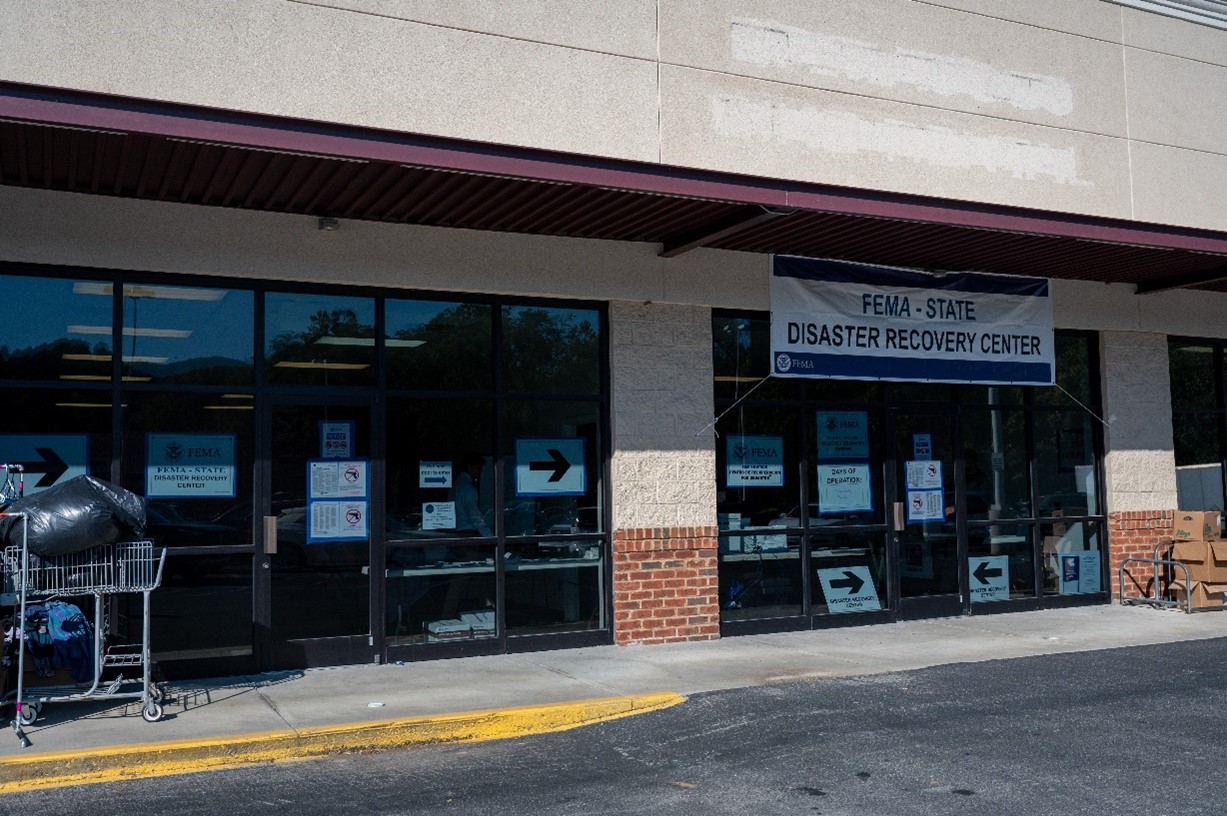BRISTOL, Va.—If you were affected by Tropical Storm Helene, visit a Disaster Recovery Center (DRC) to apply for assistance and learn about resources from FEMA, the Small Business Administration, the commonwealth of Virginia, and other organizations to aid you in your recovery.
What is a DRC?
A DRC, or Disaster Recovery Center, is an accessible facility that you can visit in person to learn more about FEMA and other agencies providing disaster assistance in Virginia. Residents, property owners, business owners and farmers can go to a DRC to apply for assistance and obtain resources.
This video provides an overview about what you can expect when you visit a DRC: Disaster Recovery Center (DRC): Your Resource After a Hurricane (youtube.com).
What can I get help with?
At a Disaster Recovery Center you can get one-on-one help with staff from the organizations present. FEMA staff at DRCs are happy to spend time with you to explain the types of assistance offered and help you apply.

The specialists at a DRC can help you:
- Apply for disaster grants from FEMA.
- Submit additional documents for your application.
- Understand and respond to a letter from FEMA.
- Apply for low-interest disaster loans for individuals and businesses with the Small Business Administration (SBA).
- Find resources about agricultural recovery and assistance for farmers.
- Learn how to replace damaged documents like proof of address or birth certificates.
- Get connected to commonwealth of Virginia resources.
- Obtain information on the National Flood Insurance Program (NFIP) and how to mitigate against future losses.
- Find other sources of assistance, like nonprofit help.

Who is at a DRC?
Every Disaster Recovery Center is a little different, based on the local community’s needs.
All DRCs will have FEMA staff, trained in the Individual Assistance program, available to answer questions about the FEMA disaster assistance application process. FEMA hazard mitigation staff are also available to speak to survivors who want to learn about ways to make their properties safer from floods and build back better. All DRCs have staff from the Small Business Administration.
DRCs will have representatives from the commonwealth of Virginia, though the specific agencies will differ from location to location. If you need help from a specific agency, you can still come to a DRC where staff can share information and get you in touch with the agency you need.
DRCs may have representatives from nonprofit organizations as well as other local agencies.

What should I bring?
You do not need to bring anything to visit a DRC – just yourself. However, depending on the help you are looking for, it can be helpful to prepare ahead of time.
Applying for Assistance: If you are starting or resuming an application for assistance, you should bring the following with you:
- Insurance information, if available
- The address and zip code of your disaster-damaged home
- Condition of your damaged home
- Social Security number
- Phone number, address, and email (if you have one) where you can be contacted
- Bank account information, if you would like to set up direct deposit
For examples of these documents and a more detailed application checklist, see the application checklist on DisasterAssistance.gov.
If you have questions about a FEMA determination letter it will be helpful if you bring the letter and any documents requested in the letter. If you have a FEMA ID number, write that down and bring it with you. If you don’t have it, staff can ask you other questions to access your application information.
What should I expect?
DRCs are accessible to all, including survivors who are Deaf and Hard of Hearing.

Every DRC is laid out differently to make best use of the space. You can watch a quick video that walks through a DRC in New York from 2021.
DRCs will always have signs out front, indicating where to enter.

Front of the DRC in Damascus, Va. with sign above door and arrows pointing to entrance. Photo: Nicholas Monteleone / FEMA
Once you walk in the front doors, you will be greeted, and you will sign in. All DRCs have security guards present at the entrance. You may have to wait for a few moments for the specialist you need to be available. If so, you can sit down in designated chairs or a waiting area. Most of the time, you will not need to wait and will be helped immediately.


As soon as a specialist is available, they will work with you personally to help answer your questions, help you register for assistance or understand your documents, connect you with available resources, and more.
Where do I find a DRC near me?
As of Oct. 21, there are six DRCs open across southwest Virginia. New DRCs will continue to open over the coming weeks. To find a DRC near you, including addresses and hours, go to FEMA.gov/drc or text DRC and a ZIP code to 43362.

FEMA has set up a rumor response webpage to clarify our role in the Helene response. Visit Hurricane Helene: Rumor Response | FEMA.gov.
For more information on Virginia’s disaster recovery, visit vaemergency.gov, the Virginia Department of Emergency Management Facebook page , fema.gov/disaster/4831 and facebook.com/FEMA.
FEMA’s mission is helping people before, during, and after disasters. FEMA Region 3’s jurisdiction includes Delaware, the District of Columbia, Maryland, Pennsylvania, Virginia and West Virginia. Follow us on X at x.com/FEMAregion3 and on LinkedIn at linkedin.com/company/femaregion3.
To apply for FEMA assistance, please call the FEMA Helpline at 1-800-621-3362, visit https://www.disasterassistance.gov/, or download and apply on the FEMA App. If you use a relay service, such as video relay service (VRS), captioned telephone service or others, give FEMA the number for that service. Multilingual operators are available (press 2 for Spanish and 3 for other languages). Disaster recovery assistance is available without regard to race, color, religion, nationality, sex, age, disability, English proficiency, or economic status.

